Table of content
Stir-fried noodles, a cornerstone of Asian cuisine, have captured the hearts and palates of food enthusiasts worldwide. From the smoky streets of Bangkok to the bustling night markets of Taipei, this dish transcends borders, offering endless possibilities for customization. Whether you crave the bold flavors of Sichuan dan dan noodles, the aromatic simplicity of Singaporean mee goreng, or the vibrant freshness of Thai pad thai, mastering the technique of stir-frying noodles is a culinary skill worth honing. This guide will walk you through every step, from selecting ingredients to executing flawless wok hei (the breath of the wok), ensuring your noodles achieve that coveted balance of texture, flavor, and aroma.
The Foundation: Ingredients and Tools
Noodles 101
The backbone of any stir-fried noodle dish is, of course, the noodles themselves. The variety you choose will dictate the dish’s texture and cooking method. Common options include:
- Egg noodles: Fresh or dried, these wheat-based noodles offer a springy chewiness ideal for dishes like chow mein.
- Rice noodles: Thin (maifun) or wide (ho fun), these gluten-free noodles are perfect for lighter preparations such as pad thai.
- Udon noodles: Thick, slippery wheat noodles that hold up well in hearty broths or stir-fries.
- Soba noodles: Buckwheat noodles with a nutty flavor, often used in Japanese-style yakisoba.
Pro Tip: Always follow package instructions for cooking times, but aim for al dente firmness. Overcooked noodles become mushy and difficult to stir-fry.
Proteins and Vegetables
Stir-fries thrive on contrasting textures and flavors. Consider these protein options:
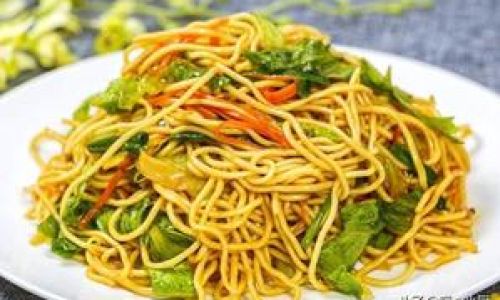
- Classic choices: Chicken, beef, shrimp, or tofu.
- Vegetarian alternatives: Edamame, tempeh, or seitan.
For vegetables, prioritize quick-cooking varieties:
- Crunchy bases: Bell peppers, carrots, snap peas, or broccoli.
- Aromatics: Garlic, ginger, shallots, or scallions.
- Leafy greens: Bok choy, spinach, or kai-lan (Chinese broccoli).
Pro Tip: Cut ingredients into uniform sizes to ensure even cooking.
Sauces and Seasonings
The soul of stir-fried noodles lies in the sauce. Stock your pantry with:
- Soy sauce: Light for saltiness, dark for color.
- Oyster sauce: Umami-rich and slightly sweet.
- Fish sauce: For a briny, fermented depth (common in Southeast Asian dishes).
- Sesame oil: A finishing touch for nutty aroma.
- Chili pastes: Sriracha, gochujang, or sambal oelek for heat.
Essential Tools
- Wok: A carbon-steel wok distributes heat evenly and develops wok hei—that elusive smoky flavor.
- Spatula: A metal spatula with a curved edge allows precise tossing.
- Knife: A sharp chef’s knife for precise chopping.
- Cutting board: Use plastic or wood to avoid dulling your blade.
Preparation: The Key to Efficiency
Stir-frying is a high-speed cooking method. Preparation, or mise en place, is non-negotiable.
-
Prep Noodles:
- Cook noodles according to package directions, but undercook by 1–2 minutes (they’ll finish cooking in the wok).
- Rinse under cold water to halt cooking, then toss with a drizzle of oil to prevent sticking.
-
Marinate Proteins:
Toss meat or tofu in a marinade of soy sauce, cornstarch, and baking soda (for tenderizing). Let sit for 15–30 minutes.
-
Chop Vegetables:
Separate ingredients into “quick-cooking” (e.g., garlic, ginger) and “slow-cooking” (e.g., carrots, broccoli) piles.
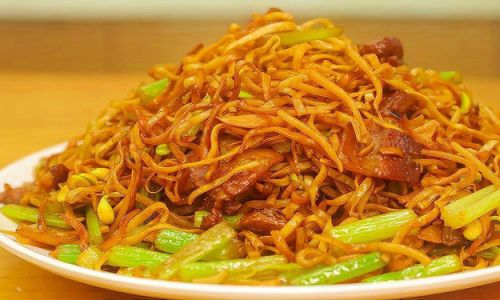
-
Mix Sauce:
Combine soy sauce, oyster sauce, sugar, and a splash of broth or water in a bowl. Having the sauce pre-measured prevents burning during cooking.
The Cooking Process: Step-by-Step
Heat the Wok
- Place your wok over high heat until droplets of water evaporate instantly.
- Add 1–2 tablespoons of oil (peanut, vegetable, or avocado oil for high smoke points).
- Swirl the oil to coat the wok’s surface.
Pro Tip: A properly heated wok ensures ingredients sear rather than steam.
Stir-Fry Aromatics
- Add garlic, ginger, or shallots. Stir-fry for 10–15 seconds until fragrant but not browned.
- Avoid burning: Aromatics can turn bitter if overcooked.
Cook Proteins
- Push aromatics to the side and add marinated protein.
- Spread into a single layer and let sear undisturbed for 30 seconds before stirring.
- Cook until 80% done, then remove and set aside.
Stir-Fry Vegetables
- Start with denser veggies (carrots, onions), stirring constantly.
- Add quicker-cooking items (bell peppers, snap peas) later.
- Pro Tip: Add a splash of water or broth to create steam and soften veggies without overcooking.
Combine Noodles and Sauce
- Return protein to the wok, then add noodles.
- Pour the pre-mixed sauce over the noodles. Use tongs to toss gently, ensuring even coating.
- Key Technique: Lift and toss rather than stirring to avoid breaking noodles.
Achieve Wok Hei
- For authentic smokiness, press noodles against the hot wok surface for 5–10 seconds to char slightly.
- Caution: Overdoing this step can make noodles bitter.
Finish with Garnishes
- Toss in fresh herbs (cilantro, basil), bean sprouts, or chopped peanuts.
- Drizzle with sesame oil and a squeeze of lime.
Troubleshooting Common Issues
- Mushy Noodles: Overcooked initially; reduce cooking time by 1 minute next batch.
- Soggy Stir-Fry: Wok wasn’t hot enough; preheat longer next time.
- Uneven Cooking: Overcrowded the wok; cook in batches if necessary.
- Bland Flavor: Sauce lacked seasoning; taste and adjust before serving.
Regional Variations to Explore
Stir-fried noodles are a blank canvas for global flavors. Try these regional twists:
-
Cantonese-Style Beef Chow Fun
- Noodles: Wide ho fun rice noodles.
- Sauce: Oyster sauce, dark soy sauce, and Shaoxing wine.
- Garnish: Crispy fried shallots and scallions.
-
Spicy Sichuan Dan Dan Noodles
- Noodles: Thin wheat noodles.
- Sauce: Chili oil, Sichuan peppercorns, and black vinegar.
- Topping: Minced pork and preserved mustard greens.
-
Thai Pad Thai
- Noodles: Thin rice noodles.
- Sauce: Tamarind paste, fish sauce, and palm sugar.
- Garnish: Crushed peanuts, lime wedges, and fresh cilantro.
-
Japanese Yakisoba
- Noodles: Wheat yakisoba noodles.
- Sauce: Worcestershire sauce, ketchup, and soy sauce.
- Topping: Pickled ginger and aonori seaweed flakes.
Advanced Techniques for Enthusiasts
-
Two-Step Stir-Fry:
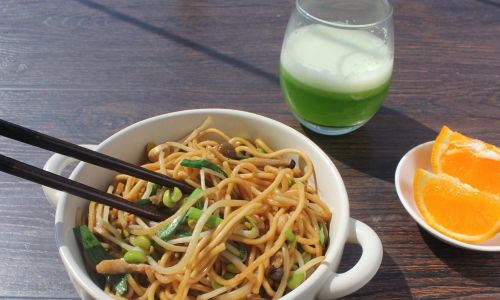
Cook noodles and protein separately, then combine at the end for precise control.
-
Velveting Meat:
Marinate proteins in a mixture of egg white, cornstarch, and oil for restaurant-quality tenderness.
-
Smoked Wok Hei:
Use a blowtorch to char noodles lightly for an intense smoky flavor.
Healthier Adaptations
- Lower Sodium: Use reduced-sodium soy sauce and limit added salt.
- Gluten-Free: Substitute tamari or coconut aminos and use rice noodles.
- Vegan: Replace oyster sauce with mushroom-based stir-fry sauce and use tofu.
Conclusion: The Joy of Stir-Frying
Stir-fried noodles are more than a meal—they’re a dance of fire, timing, and creativity. With practice, you’ll learn to balance the delicate interplay of textures and flavors, transforming simple ingredients into a symphony for the senses. Whether you’re whipping up a quick weeknight dinner or impressing guests at a dinner party, mastering this technique opens doors to countless culinary adventures. So grab your wok, crank up the heat, and let the sizzle begin!
Final Pro Tip: The best stir-fries are made with intuition. Taste as you go, adjust seasonings boldly, and don’t fear the flame—your wok will guide you.
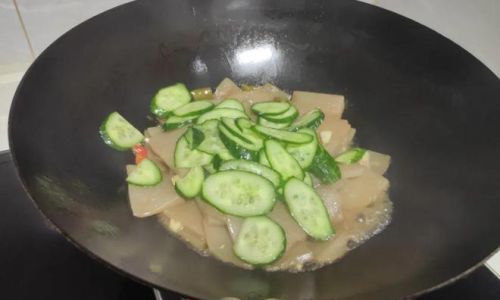

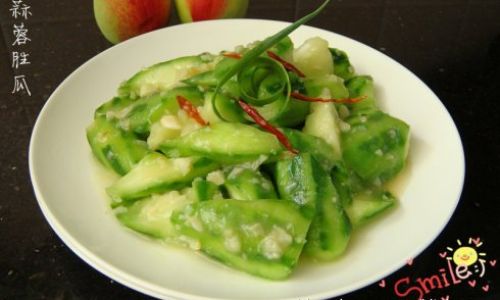
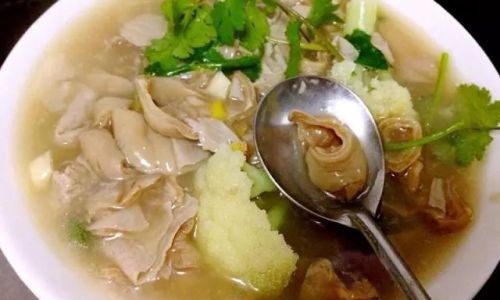

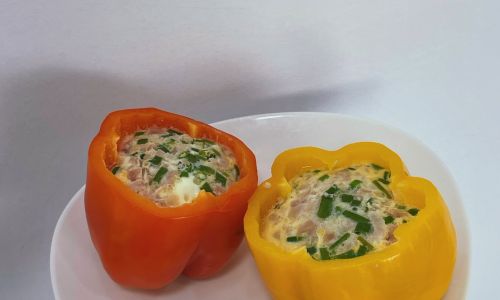
0 comments